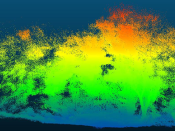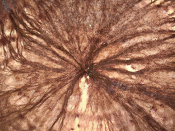Por Carlos Gravato (Departamento de Biologia, CIÊNCIAS ULisboa).
Apesar das pesquisas em curso sobre o processo de envelhecimento, o estudo de animais simples, como as planárias, pode ser crucial para compreender as vias fisiológicas envolvidas e as suas interações, bem como os processos compensatórios que podem ser usados para superar o stress oxidativo...
Abstract: Despite the ongoing research on the aging process, the study of simple animals, such as planarians, might be crucial in understanding the physiological pathways involved and their interactions, as well as the compensatory processes that might be used to overcome oxidative stress. The study of Girardia tigrina is of great importance due to its remarkable regenerative capacities, having no aging signs, and often considered an immortal species. This research work aimed to determine a battery of biomarkers to assess the aging process of planarians, and establish the potential interactions between several physiological pathways, focusing on aerobic and anaerobic energy production, enzymatic and non-enzymatic antioxidant capacity, detoxification activity, oxidative stress, and the neuromuscular activity. The results obtained make it possible to distinguish four stages, with a state of oxidative stress in planarians aged between 9 and 12 months associated with a decrease in antioxidant capacity and energy production. In addition, it was possible to observe phenotypic changes such as the formation of neoplasms and profound mutations in organisms, supporting the hypothesis that these show signs of normal aging over time, corroborating the idea of mortality.






















